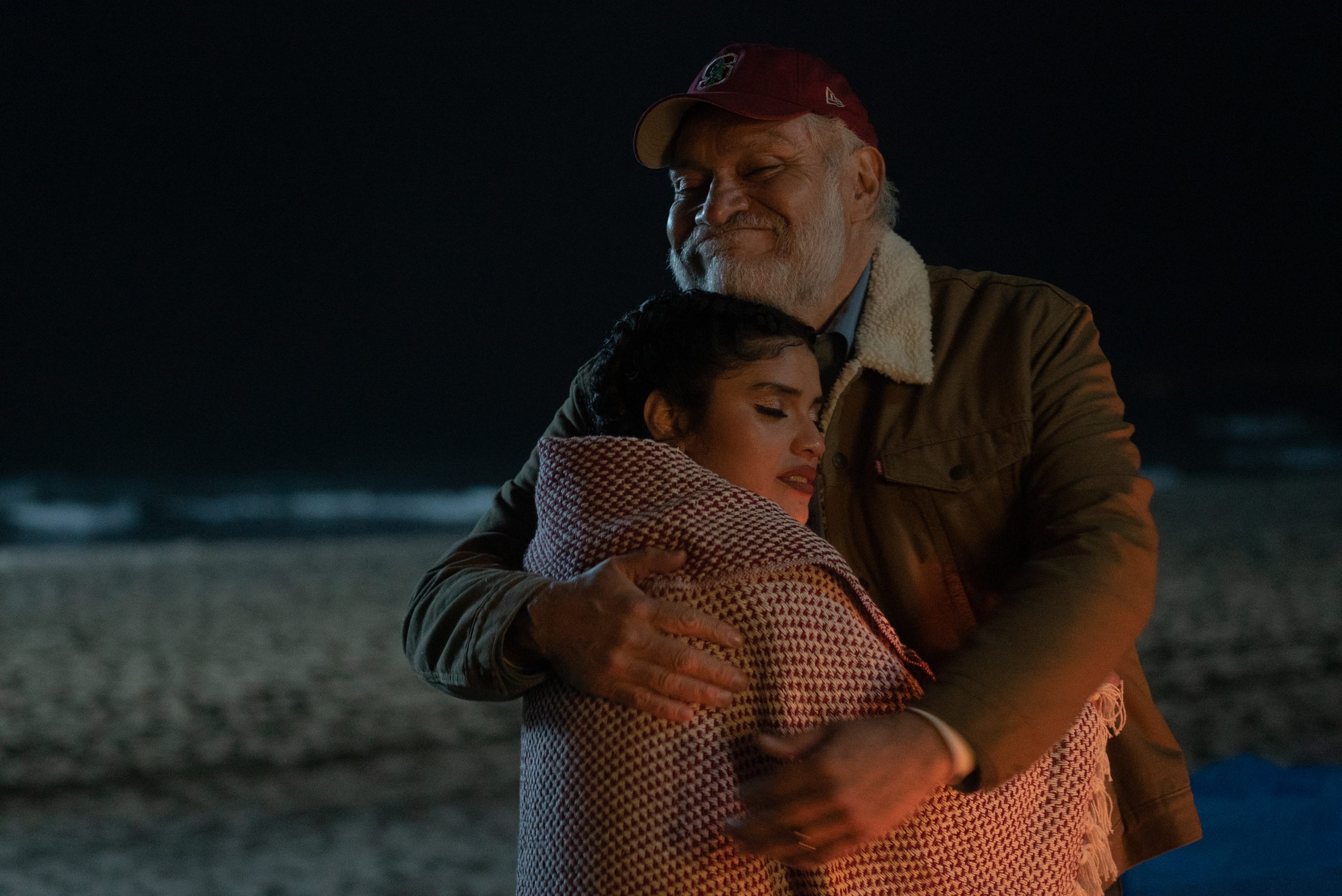Season two of Gentefied unravels Morales’ family secrets with closure, showing all our relatable characters begin to slowly heal their generational trauma. Their triggers bounce around, shared between each family member. Their heavy burdens are gently observed each episode, as our favorites reflect on the possibility of losing their abuelo, thanks to an inhumane immigration system.
If you’re in the process of healing, this show will provide you with some closure, reminding you that it takes time. Especially if you’re working on healing the trauma of those who came before you. Gentefied dramatizes multi-generational healing, the guilt gap between US-born primos and their immigrant parents, and learning to understand the sacrifices each of us make para la familia.

Los Primos Spread Their Wings
In this new season, los primos have each other’s backs. With everyone doing what they can to prevent Pop from being deported to Mexico, life still goes on. This season, Ana, Erik, and Chris find their own path. Erik (my Li-bro) is a daddy now. Building a life with Lidia in Palo Alto, he moves out of his home in Boyle Heights. The struggles of leaving your family behind to start your own will tug at first-gen guilt strings. In our community, we are always surrounded by family. Moving away can be so lonely and it leaves Erik feeling like he doesn’t belong in his new life with his own little, nuclear family.
Cousin Chris gets a love story this season and I am here for it. Saraí challenges him, asking questions push him to come to terms with his identity. His character also comes to terms with his disapproving father, letting Chris face his own traumas when it comes to figuring out his path. Toggling back and forth with following his dreams as a chef and blending culture and tradition to claim his identity, Chris is faced with betrayal everywhere he looks. Ultimately (some spoilers ahead), he creates a new track that doesn’t involve being taught by the colonizer or pretending like a romantic relationship can be his end-all. He ends up going to Mexico City to learn from a legendary chef there. The irony of going back to Mexico for a chance for a better life is one of my favorite plot points. Especially for a character who struggles with their own Latinx identity, and for a family who is fighting for their own grandfather to not get deported there. On what side of the ni soy de aquí, ni soy de allá, does Chris fall now? I want season three so I can find out!
Ana gets to become self-aware this season too. After her break-up with Yessika in season one, her art takes her to new opportunities she never thought possible. Finding new love and her voice along the way, Ana passionately fights for her family. There’s a reunion scene between Yessika and Ana that might hit home for those who have been to the therapist for your ex. When Ana tells Yessika that she learned so much from her, Yessika’s reaction is a home run — “that’s great for you.” Leaving Ana to realize she still has a long way to go. It’s a great scene that shows how two people can continue to grow at different speeds and how those who we grow up with have a lasting impact on us.

What Is The American Dream?
The theme of gentrification continues this season as the Morales family is pushed out of their restaurant. Finally surrendering the keys to Mama Fina’s, their fight for survival turns instead to Pop’s ability to stay in the country. Pop realizes that his grandkids have a chance to chase their own dreams and continue to live their own version of the American dream, helping him slowly come to terms with his potential deportation. The goodbyes turn into closure and the definition of home remains the same — it’s where your family is.
As the holidays come around, the definition of the American dream pivots into just wanting to be better for themselves and for each other. Lidia mentions to Erik that their parent’s mistakes are living rent-free in their relationship. It makes them choose to be their own people, outside of their trauma. Deciding to heal themselves, together. The root of generational trauma gets a beautiful scene at the beach between Pop and his son, Ernesto (Chris’ father) when Pop says, “los hombres del rancho somos de pocas palabras, mijo.” He apologies for being silent all these years, the only way he ever knew how to communicate. It’s a domino effect and a tear-jerker.
As someone who is working on healing generational trauma, this show validates that it’s possible for our community to heal. The machismo and the digs on therapy and mental health run deep in our Latinx community. It’s so breathtaking to watch a show that slowly helps to unravel the emotional trauma and the burden we carry throughout our lives. It makes me wonder if the American dream can be about having the opportunity to heal generational trauma as much as it is to have more financial security and leave a legacy.
For example, when Ana’s art gets some Nike money, it gives her the opportunity to take care of those who were always there for her. One of my favorite lines is when she says, “what’s the point of making money if you can’t spend it on your family?” It’s that pivotal point for a first-gen where they’re able to live their own lives and still take care of their families (guilt-free). I might not be quite there yet, but I’m glad that Gentefied shows me there’s hope for us. A path forward, with more than one way to get there, healing our way towards our own version of the American dream.

